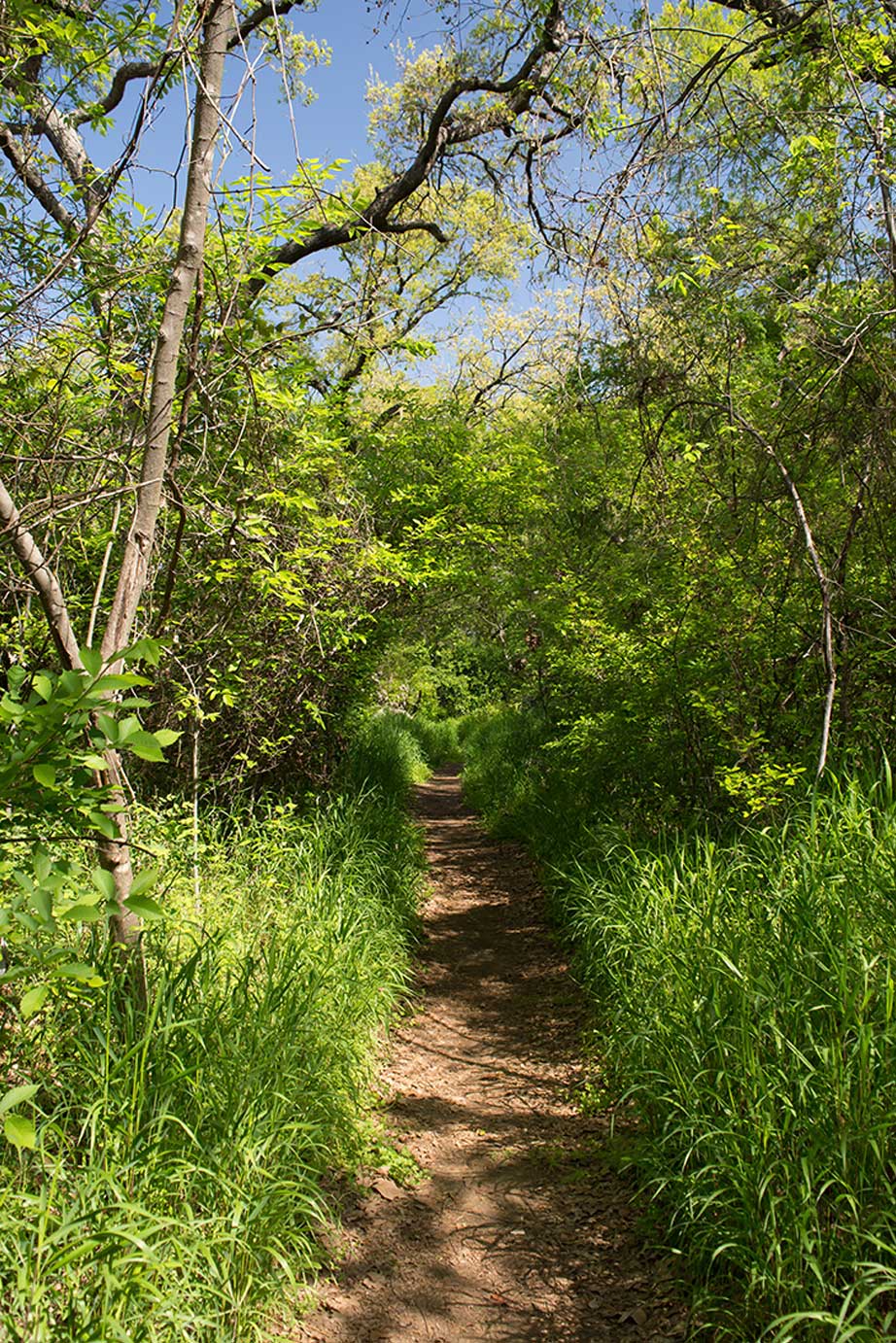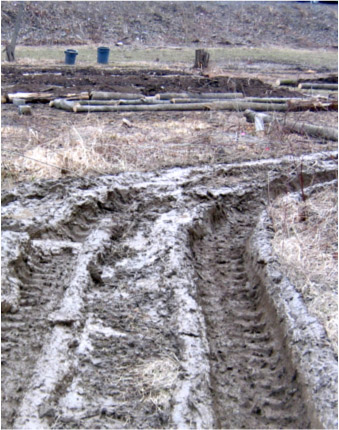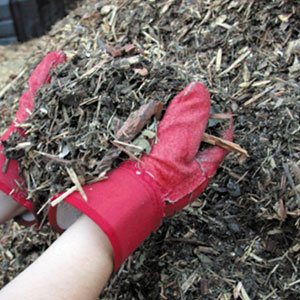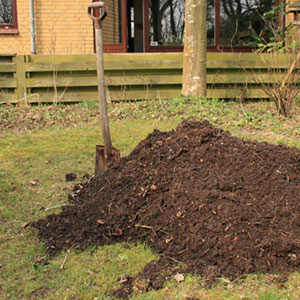
Shallow tree roots can be a sign of soil compaction. Image credit: Shutterstock/JoannaTkaczuk
Strategies for Avoiding Soil Compaction
Weight from a single intense force or small repeated forces pushes soil particles together, causing them to compact. Compacted soils have reduced macro and micro pore space, which result in limited air and water movement, restricted root growth, reduced infiltration rates and decreased biological activity. Therefore, highly compacted soils greatly limit plant growth and the ability of soils to absorb rainfall and filter pollutants.
Over-compaction is one of the most common characteristics of degraded soils. However, simple changes in landscape use and maintenance practices can protect soils.
Causes of soil compaction include:
- Construction and maintenance equipment such as skid steer loaders used to remove vegetation and prepare a site for construction
- Riding lawnmowers used when the soil is wet
- Parking or driving on portions of a site not designed for vehicular traffic
- Repeated pedestrian and animal traffic
- Repeated tillage
- Walking on, compressing or digging in the soil while wet
- Rainfall on bare soils, particularly in areas where rainfall is intense and concentrated, such as in runoff from rooftops
- Removing organic matter such as leaves, grass clippings and branches will, over time, reduce the organic matter content of the soil and increase the likelihood of compaction.
Signs of soil compaction include:
- Water ponding and/or very slow infiltration rates
- Surface water runoff from irrigation and rain
- Soils that are bare and not supporting vegetation
- Shallow tree rooting
- Stunted vegetation
- Strong resistance to penetration when compared to surrounding soils. You can test soils using a garden shovel or steel rod and applying weight evenly. It is often helpful to begin by comparing obviously compacted areas with soil in other parts of the landscape.
Protect soil from compaction.
- Avoid working garden soils when wet.
- Avoid bare soils. Cover soils with either vegetation or mulch.
- Create pathways and designated areas for walking and driving.
- Use walls, fences and mulch to protect gardens from foot and vehicular traffic.

Soil is compacted by foot traffic on this pathway; compaction such as this may be necessary for human movement and maintenance. Image credit: Shutterstock/Alissala

Construction equipment and heavy traffic can compact soils. Image credit: Wikimedia Commons
Make special considerations for newly developed or redeveloped landscapes.
- Before development, conduct a site analysis and map areas of healthy soils and areas of minimal, moderate and severe compaction. To the greatest extent possible, avoid grading, vegetation removal or otherwise disturbing healthy soils. Locate site features that require soil disturbance such as driveways, building foundations and patios in places where the soil is already degraded.
- Work with the building and landscape professionals to develop a soil preservation plan which clearly outlines the areas that are not to be disturbed. These areas should be fenced off, and construction workers should be made aware they should not be disturbed.
- During construction, restrict the areas where soil is disturbed to defined perimeters around buildings and hardscape. The Sustainable Sites Initiative recommends that disturbance be limited to 40 feet beyond the building perimeter; 10 feet beyond surface walkways, patios, parking and utilities that are less than 12 inches in diameter; 15 feet beyond primary roadway curbs and main utility branch trenches; and 25 feet beyond constructed areas with permeable surfaces such as stormwater detention facilities and recreation fields.
- Work with building and landscape professionals to designate areas for parking, equipment and material storage, preferably using areas where soil is already degraded and/or areas that will be used for a patio, driveway or building. If possible, use existing roads or parking areas for access and storage.
- In areas where compaction cannot be avoided, carefully harvest and store the topsoil for reuse.
- During construction, spread thick layers of mulch over areas that may receive occasional traffic. Sheets of plywood on top of the mulch will help spread the weight in heavy use areas.
- Use the lightest equipment possible to complete the job.










